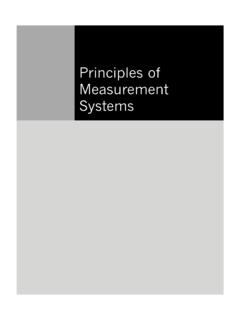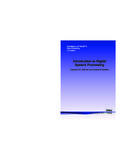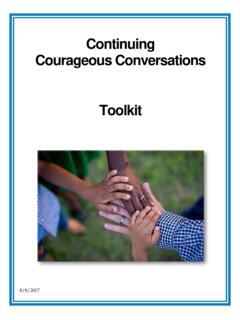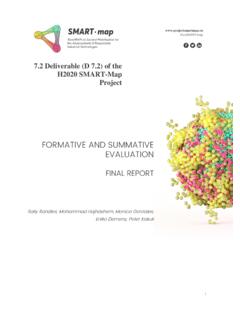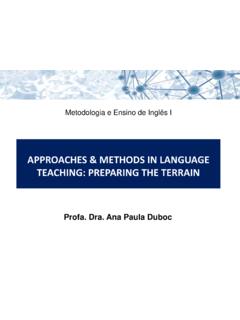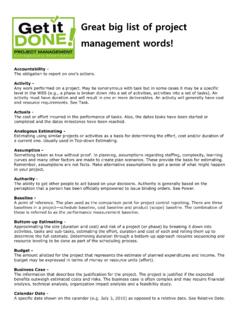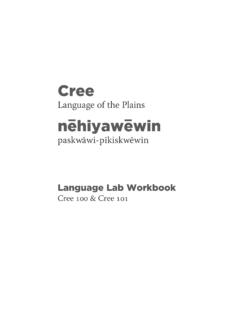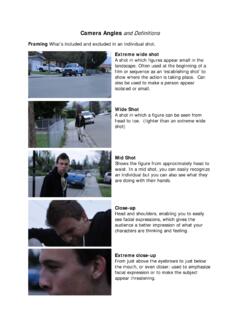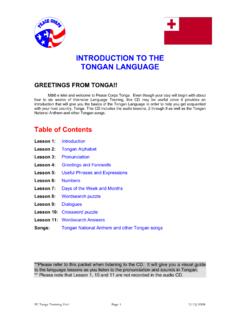Transcription of Audio-Lingual Approach
1 Audio-Lingual Approach definitionlingual Approach CharacteristicsMain of activitiesTypes of theoryBehaviorist principles of Audiolingualism Main principles of Audiolingualism s role Teacher s role s roleLerner s of instructional materialsRole of instructional of AudioDecline of audio --lingualismlingualismAUDIOAUDIO--L INGUAL lingual APPROACHAPPROACHis ..atechniqueof of foreign-languageinstructionthat emphasizes that emphasizes audio -lingualskillsover over readingandwritingand is and is characterizedby by extensiveuseofpattern practice (dictionary. com).com).HistoryHistoryIN the period of World War II IN the period of World War II United States required linguists to set up special training programwhich would be emphasized on fast and easy foreign language Army Specialized Training Program (ASTP) was established in 1942.
2 The ASTP, the so-called Army method, had a significant impact on linguistics and the way foreign languages were taught. The The 11stststepsteptowards towards Army method . It was based on Leonard Bloomfield s technique (informant method)of memorizationand repetitionin simple foreign language patterns. In brief, the linguist, without knowing the language, was trained to absorbits basic structure fromthe informant/native speaker and together with students gradually learned how to speak this language, as well as to understand much of its basic grammar (Richards, et-al. 1987). Leonard Bloomfield, 1887 -1949, AmericanlinguistThe The 22ndndstepsteptowards towards ..became The Aural-Oral Approach , which was invented by Charles to Fries, languageshould be taughtby using intensive oral drilling of its basic patterns (Richards, et-al.)
3 1987). This method emphasized: proper pronunciationand intonationCharles Fries, director of the first English Language Institute at Michigan University The beginning of The beginning of Contrastive AnalysisContrastive AnalysisFriespublished his principles in Teaching and Learning English as a Foreign Language (1945), in which the problems of learning a foreign language were attributed to the conflict of different structural systems ( , differences between the grammatical and phonological patterns of the native tongue and the target language) . The idea of contrastive analysis of two languages was presented in this work. It was essential in order to prevent potential problems in second language acquisition and it becamethe basis for a major branchof applied linguistics called systematic comparisons.
4 This development of systematic comparison provided a new perspective towards Foreign Language Teaching. The emergence of audio -linguisticapproachRichards (1987), this method claimed to have transformed language teaching from an art to science, which would enable learners to achieve mastery of a foreign Language effectively and efficiently Main CharacteristicsMain CharacteristicsAudio- lingual Approach suggests that students be taught phonology, morphology,and syntaxof the language; all these patterns can be learned through contrastive analysis of the differences betweenthe native tongueand the target language, which helps students to acquire new language Approach is based on:listening speaking reading writing Mechanism of teaching Foreign language isForeign language is presented entirely orally.
5 (in early stages of learning language written materials are not presented)2. Reading and Writing activities (are based on what students already know how to say orally)The basis of The basis of audioaudio-- lingual approachlingual Approach Repetition oral drills memorization of simple patterns are the basis of Audio-Lingual Approach . Types of activitiesTypes of activities Repetition:where the student repeats an utterance as soon as he hears it, without looking at printing materials. After a student has repeated an utterance, he may repeat it again and add a few words, then repeat that whole utterance and add more used to know him.
6 I used to know used to know him years Inflection: Where one word in a sentence appears in another form when repeated bought the ticket. -I bought the tickets. Hebought the candy -Shebought the of activitiesTypes of activities Replacement: Where one word is replaced by another bought this house cheap. -He bought itcheap Helenleft early - Sheleft early. Restatement:The student rephrases an utterance and addresses it to someone else, according to him to wait for you. Wait for me. Ask her how old she is How old are you?
7 Types of activitiesTypes of activities Completion: The student hears an utterance that is complete except for one word, then repeats the utterance in completed 'll go my way and you go ..- I'11 go my way and you go yours Transposition: A change in word order is necessary when a word is m hungry. /so/ - So am I Contraction: A single word stands for a phrase or your hand on the table. -Put your hand thereTypes of activitiesTypes of activities Transformation: Asentence is transformed by being made negative or interrogative or through changes in tense, mood, voice, aspect, or knows my address. He doesn't know my address. Integration:Two separate utterances are integrated into must be honest.
8 It is important that This is important. they be honest. Types of activitiesTypes of activities Rejoinder:Student makes an appropriate rejoinder to a given pattern. Usually student told in advanced to respond in one of the following ways: (polite, answer the question, agree, disagree, express surprise, etc.)EXAMPLES:Thank you. You're welcome. What is your name? My name is Sam. Restoration: is one of the most common patterns that can be found in ESL textbooks;student is given a sequence of words that have been pulled from a sentence, but still keep the meaning.
9 The main aim of this exercise is to build the sentence using this word : kids/waiting /school bus Kids are waiting for school of activitiesTypes of activities dialogues, which students have to listen to, repeatand memorize, focusing on proper pronunciation, intonation, stress and rhythmusage. They provide the structureand idea of how to use some types of patterns in some sort of situations. Usually dialogues illustrate socio-cultural situations of a target language, such as greeting, opinion exchanges, likesor dislikes, standard safe topics (weather, ) that help students to memorizewhich utterance is suitable for each situation.
10 Behaviorist theoryBehaviorist theoryBehaviorist psychology and eventually it had a significant impact on the teachingand learningprinciplesof Audio-Lingual psychologyclaimed that it knows the secrets of all human learning including languages (Richards & Rodgers, 1987). Behaviorism is based onthree main elements of learning:stimulus responsereinforcement Brown (1980) AudioAudio-- lingual approachlingual this schema..utilizes this schema. If we apply this to foreign language learning we notice that the stimulusis the information about foreign language the response is student s reaction on the presented material the reinforcement is natural self-satisfaction of target language use (Richards & Rodgers, 1987)Main Main principles principles of of AudiolingualismAudiolingualism First of all, foreign language learning is a mechanical process.

